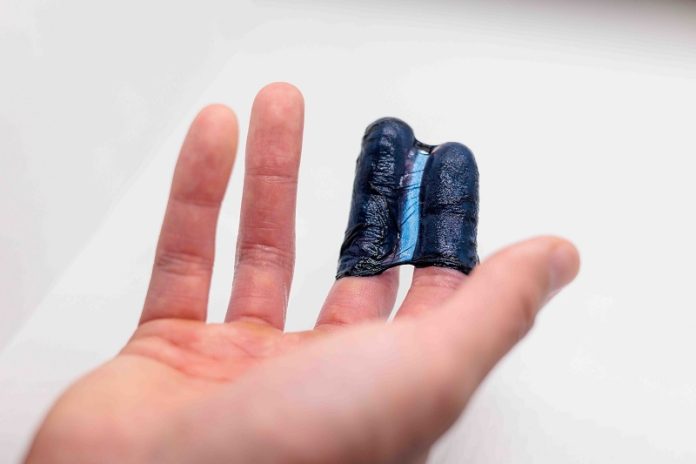
Researchers at the University of Chicago have developed a unique hydrogel that functions as a semiconductor, bridging the gap between electronics and living tissues.
Led by Assistant Professor Sihong Wang, the team from the Pritzker School of Molecular Engineering created a flexible, stretchable material that conducts electricity while maintaining properties similar to human tissue.
This new material could revolutionize bioelectronics, like pacemakers, sensors, and drug delivery systems.
The problem with traditional semiconductors is that they are rigid, brittle, and “water-hating,” making them incompatible with soft, hydrated tissues.
Hydrogels, on the other hand, are soft, stretchy, and filled with water, making them ideal for working alongside biological tissues.
However, until now, combining the two properties into one material has been a significant challenge.
The UChicago team took a fresh approach to developing this material.
Instead of trying to dissolve semiconductors in water, they used a different method called solvent exchange.
They dissolved the semiconductor in an organic solvent that could mix with water and then prepared a gel.
Initially, this gel wasn’t a hydrogel but an organogel. To convert it into a hydrogel, they immersed the entire material in water, letting the organic solvent dissolve out while water took its place.
This new process allows the material to retain its semiconducting properties while behaving like a typical hydrogel, with soft, tissue-like characteristics.
The resulting hydrogel semiconductor can stretch up to 150% and has a tissue-level softness, making it highly compatible with biological tissues. It can also effectively transmit electrical signals, a crucial function for bioelectronic devices.
One of the main benefits of this material is that it can directly interface with tissues, reducing the immune responses and inflammation that often occur when traditional medical devices are implanted.
Additionally, hydrogels are porous, which allows them to efficiently transport nutrients and chemicals. This feature enhances the material’s ability to sense biological signals and perform therapeutic functions.
For instance, because of its porosity, the hydrogel semiconductor can better detect biomolecules, increasing the sensitivity of biosensors.
It can also improve photo-modulation effects, such as using light to activate pacemakers or accelerate wound healing with a gentle warming effect. This increased efficiency comes from allowing more biological molecules to interact with the material.
The researchers have patented this new hydrogel semiconductor and are working to commercialize it through UChicago’s Polsky Center for Entrepreneurship and Innovation. They believe this breakthrough could lead to safer, more effective, and longer-lasting bioelectronic devices.
“Our material combines the best of both worlds—flexibility and electronic capability—making it ideal for implantable medical devices,” says Sihong Wang. “It’s truly a case where one plus one is greater than two.”
This new development has the potential to transform how medical devices interact with living tissues, improving patient outcomes in a wide range of treatments, from pacemakers to wound care.



